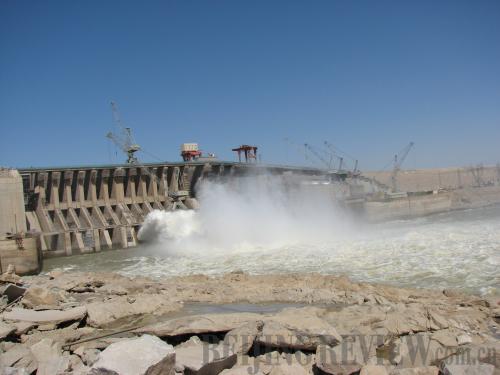|
 |
|
BIG MUSCLE: Sudan's Merowe Dam benefits from Chinese financial support project (XINHUA) |
Stephen Hayes, President and CEO of the Corporate Council on Africa, warned in August that unless the U.S. Government establishes a comprehensive Africa policy that fosters private investment alongside aid commitments, the U.S. will continue to lose ground to China. His primary concern is the lack of "public-private cooperation" available to U.S. firms through export credit and investment insurance agencies (commonly referred to as ECAs). China's ECAs were created as part of its WTO accession, and have subsequently become central to the "going-global" strategy announced by Beijing in 2002.
China's relationship with Africa has been criticized in the West. For example, the U.S. Treasury has described China as a "rogue creditor." This reflects a lack of understanding of the importance of ECAs to the global economy, and their role in mitigating political risk and encouraging Africa's economic development.
Export credit financing may not make the world go round, but it does make goods go round the world. Today the global market for trade finance is estimated by the WTO to be $10-12 trillion and supports roughly 80 percent of all global trade. This financing enables transactions that would not otherwise take place by extending credit, mitigating commercial risks such as default or insolvency of the buyer, and/or political risks such as the inability to transfer foreign exchange, war, government action and other risks.
Around 90 percent of world trade takes place on a short-term basis (repayment terms of under 1 year) so is largely devoid of political risk, allowing demand for credit or insurance to be met by the private sector in advanced countries. The remaining 10 percent relies on repayment terms that can be much longer, up to 10 or more years for investments, infrastructure projects or large capital goods deals. Even in countries with well-developed financial sectors, these longer repayment terms (particularly to higher risk countries) can only be covered by public ECAs.
Stepping into the game
In forming institutions to manage political risk, China is emulating institutions dating back to the Soviet Revolution. The first ECA was established in 1919 so UK firms could maintain exports to Russia in a climate of heightened political risk. Since then, ECAs have been created in almost all high- and middle-income countries, with the majority dating to the post World War II period. Today they exist in a regulated environment as part of the global trading regime.
In the 1990s China dismantled its old export promotion policies in favor of WTO compliant ECAs. China now has two ECAs:
● China EXIM Bank was created in 1994 and offers a variety of services such as providing export credits, lends on foreign government loans for projects in China and offers foreign exchange guarantees.
● The China Export and Credit Insurance Corp. (Sinosure) was created in 2001 and is an investment and trade insurer against commercial and political risks.
There are aggregate statistics showing China's ECAs as giants, but these are misleading because China's ECAs are involved in short-term financing, particularly Sinosure whose business is 80 percent short term. Whilst generalized comparisons are inappropriate, it is true to say Chinese ECAs have come from nothing to be among the largest in the world, and that on the continent of Africa they are the largest by some distance.
|